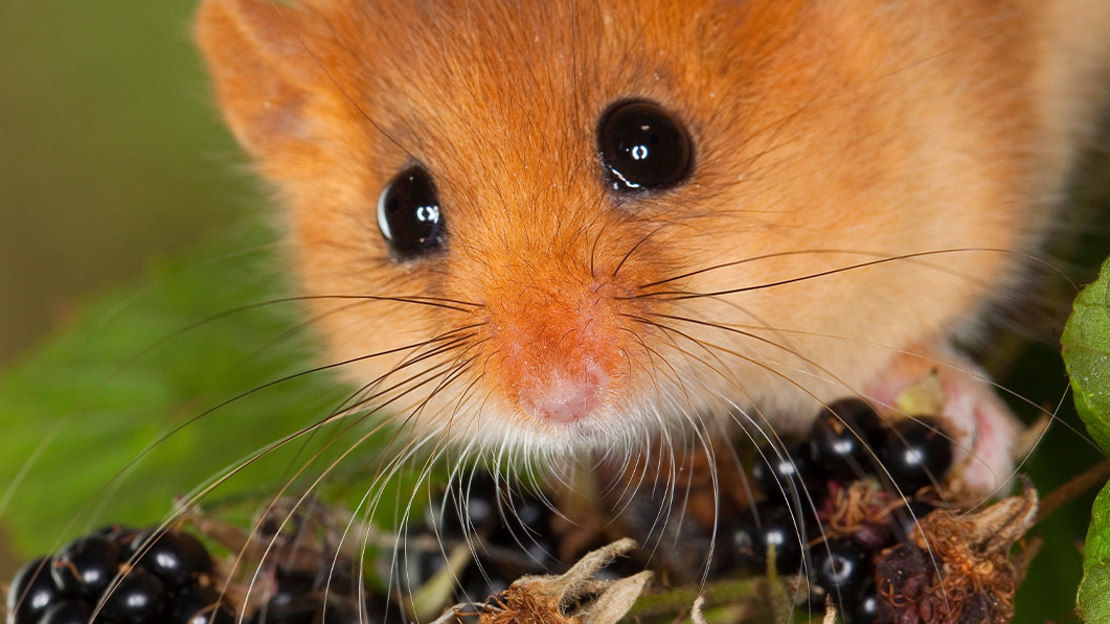
Endangered wildlife appeal
Woodland wildlife is fading before our eyes. Please support our appeal to save rare and threatened species.
Donate nowWith over 4,000 species in the UK, beetles really are everywhere. They range in size, colour and shape but all have biting or chewing mouthparts and hardened wing cases with wings folded beneath. Around 1,000 beetle species rely on trees and woodland habitats, from decaying wood to breed in, to carrion to feed on.
Trees woods and wildlife
A cheerful beetle with a vicious appetite, the 7-spot is our most familiar ladybird. They’re common in woods, parks and hedgerows, and a welcome pest control in gardens.
Trees woods and wildlife
Rare jewel. Treetop adventurer. The blue ground beetle is found at just a handful of sites in England and Wales, scaling trees under cover of darkness in search of slugs.
Trees woods and wildlife
Cute and clumsy. The charming, but alarmingly large, cockchafer spends late spring sensing for the perfect mate with its fanned antennae. Spot them in woodland clearings or bumping into lit windows in late spring.
Trees woods and wildlife
Destroyer of wood. Omen of death. The deathwatch beetle might be small, but it can have a big impact. Listen out for its rhythmic tapping in old trees and buildings.
Trees woods and wildlife
Jet-black with an even darker reputation. The devil’s coach horse has long been associated with sinister forces. In reality, it is only other invertebrates that have cause to fear this voracious predator.
Trees woods and wildlife
Emitting an eerie yellow-green glow at night, female glow-worms use bioluminescence to attract mates. Not worms at all, they are actually beetles that lurk in lowland Britain.
Trees woods and wildlife
Aromatic and iridescent. Spot this musk-scented longhorn beetle glimmering on the trunks of trees.
Trees woods and wildlife
A bright, cheery leaf-lover. The orange ladybird spends its winters nestled in the leaf litter and its summers feasting on mildew in the canopy.
Trees woods and wildlife
A bright-coloured, picky eater. The poplar leaf beetle spends its time munching on the leaves of willows and, you guessed it, poplars.
Trees woods and wildlife
A flame-coloured sun worshiper, the red-headed cardinal basks in the summer sun in woods and hedgerows, and nestles under loose bark on broadleaved trees.
Trees woods and wildlife
Big and bold deadwood lovers. These impressive insects need trees to feed and breed.
Trees woods and wildlife
With striking, iridescent bodies that shimmer like oil slicks in the sunshine, rose chafers are easy to spot as they crawl among the flowers on summer days.
Trees woods and wildlife
Impressive, heavily armed and a formidable fighter. The stag beetle depends on trees and woods for its survival. Its fat larvae feed on the decaying wood of old broadleaved trees. Loss of its woodland habitat means that the stag beetle is now a nationally scarce species.
Trees woods and wildlife
Glimmering and rare, the violet click beetle is only found in three places in the UK. This elusive beetle is entirely reliant on the decaying wood of ash and beech trees.
Trees woods and wildlife
A sheep in wolf’s clothing, the wasp beetle gets by looking much more threatening than it is. Its larvae feed on dry deadwood while adults collect pollen from flowers.

Woodland wildlife is fading before our eyes. Please support our appeal to save rare and threatened species.
Donate now